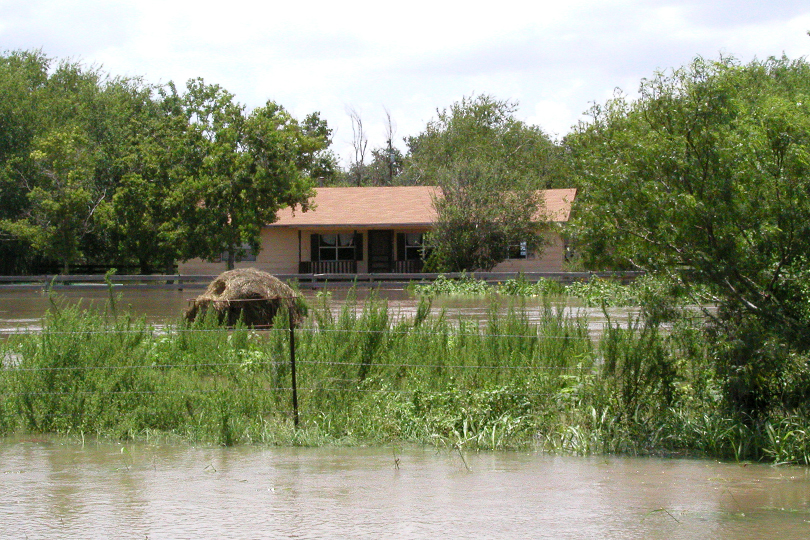By Jennifer Dorsett
Field Editor
As Hurricane Laura makes her way across the Gulf of Mexico, property owners in the projected path of the storm are preparing for the worst.
But the Texas A&M AgriLife Extension Service’s Texas Well Owner Network (TWON) wants those with private water wells to be prepared for what comes after the storm surge recedes, too.
It is highly likely the wells of some residences will be submerged, which could result in contamination. It’s best to assume a flooded well is a contaminated well, according to AgriLife Extension Water Resource Specialist Diane Boellstorff,.
“You should not use water from a flooded well for drinking, cooking, making ice or brushing your teeth until you are satisfied it is not contaminated,” she said.
Floodwater may contain manure, sewage from flooded septic systems or wastewater treatment plants and other contaminants. A septic system located near a well could also cause contamination when the soil is flooded.
Owners should send water to a laboratory for testing as soon as possible, Boellstorff said. The Texas Commission on Environmental Quality (TCEQ) has a list of certified laboratories that can analyze drinking water, available online.
Wells may need to be decontaminated to provide safe drinking water again. Boellstorff noted instructions for decontamination of water wells are available on the TWON website in both English and Spanish.
Research shows the presence of E. coli in water indicates waste from humans or other mammals may have contaminated the water, according to Joel Pigg, AgriLife Extension program specialist and TWON coordinator.
E. coli contamination is more likely to have additional pathogens present which can cause diarrhea, cramps, nausea and other symptoms.
Anyone with a private water well possibly contaminated by floodwater should only use bottled, boiled or treated water until the well has been tested and found to be safe, he added.
“To make water safe for drinking, cooking and washing, bring it to a rolling boil for at least one minute, and then allow it to cool,” he said.
If boiling water is not possible, Pigg said it can be treated with unscented household bleach. Detailed instructions are available here.
Water wells may also be damaged in storms, he noted. Inspecting the well and any associated electrical wiring carefully before restoring electricity is a good practice.
“After a flood, wells should be inspected for physical damage and signs of leakage. If it appears damaged, consult a licensed water well contractor to determine whether repairs are needed,” Pigg said. “If the pump or electrical system has been underwater and it is not designed to be submerged, do not turn the pump on as there is a potential for electrical shock or damage to your well or pump.”
If any of the electrical components were under water, Pigg said a qualified electrician, well driller or pump installer should check the wiring system and components prior to restoring power.
Boellstorff noted there are also steps property owners can take prior to the storm, if possible.
If a water well is expected to be flooded, the following actions are recommended:
- Cover and secure any exposed parts of the well system to protect it from flying debris or high waters.
- Fill up the pressure tank as much as possible.
- Turn off electricity to the well.
- If an aerobic septic system is present, turn off the electricity to it as well. No special preparations are necessary for conventional septic systems.
Click here to learn more about the programs offered through TWON and to find additional publications and resources.

